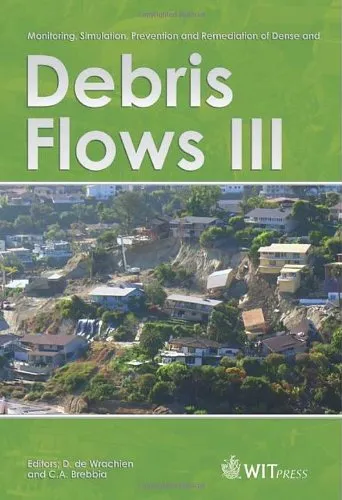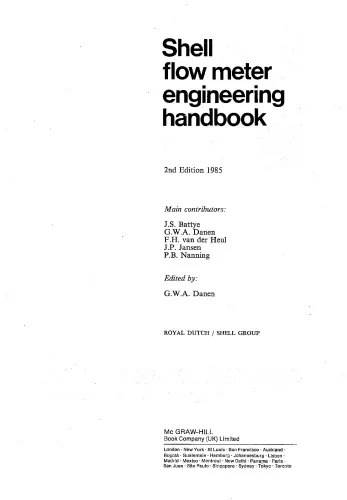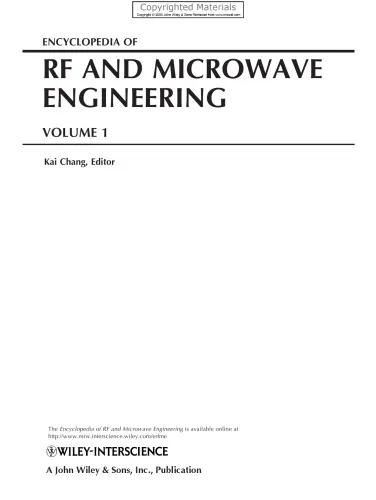Monitoring, Simulation, Prevention and Remediation of Dense and Debris Flow III (Wit Transactions on Engineering Sciences)
3.7
Reviews from our users

You Can Ask your questions from this book's AI after Login
Each download or ask from book AI costs 2 points. To earn more free points, please visit the Points Guide Page and complete some valuable actions.Related Refrences:
Introduction to Monitoring, Simulation, Prevention and Remediation of Dense and Debris Flow III
"Monitoring, Simulation, Prevention and Remediation of Dense and Debris Flow III" is a comprehensive scientific resource that addresses the challenges and advancements in understanding dense and debris flows. As part of the prestigious WIT Transactions on Engineering Sciences series, this book builds upon its predecessors to further explore both theoretical and practical approaches to mitigating and managing the devastating impact of dense and debris flows on both natural landscapes and human habitats. By integrating the latest research, advanced simulation techniques, and innovative methods for prevention and remediation, this book serves as an invaluable guide for researchers, engineers, urban planners, geologists, and environmental scientists.
Detailed Summary of the Book
The book delves deeply into the complex phenomena governing dense and debris flows—fluid-like movements of water-soil-rock mixtures that pose significant risks during natural disasters such as landslides, flash floods, and volcanic eruptions. It provides a multi-disciplinary approach to studying these phenomena, incorporating insights from hydrology, geology, engineering, and computational science.
The volume is organized into sections focusing on specific topics, such as the physics of debris flows, mathematical models for simulation, field monitoring techniques, advanced engineering practices for disaster prevention, and strategies for the environmental remediation of affected areas. Each chapter is authored by leading experts, offering cutting-edge solutions and a wealth of case studies from around the globe. These real-world examples provide invaluable context for understanding the challenges of addressing disasters caused by dense and debris flows.
A key feature of this book is its emphasis on sustainability and interdisciplinary collaboration. By encouraging the integration of knowledge from distinct domains, it pushes the boundaries of traditional engineering and environmental sciences.
Key Takeaways
- State-of-the-art monitoring and detection technologies for early warnings in debris-flow-prone regions.
- Robust simulation techniques for predicting the flow trajectory, velocity, and impact of debris flows.
- Preventive engineering measures such as slope stabilizations, drainage improvements, and retention basins.
- Successful case studies offering practical insights into remediation strategies for affected areas.
- Emphasis on balancing development and environmental conservation to reduce long-term risks.
Famous Quotes From the Book
"Debris flows, though devastating in their impact, are reminders of the dynamic nature of Earth's surface and the intricate balance required to coexist with natural processes."
"Prevention is not merely a challenge of engineering; it is also a challenge of foresight, policy, and human collaboration."
Why This Book Matters
Dense and debris flows present significant risks to communities and ecosystems worldwide, often resulting in catastrophic loss of life, property, and biodiversity. This book is critical because it provides evidence-based solutions, pioneering simulation tools, and innovative prevention strategies that can help reduce these risks.
What sets this book apart is its forward-thinking approach to understanding the complexities of debris flows. It not only focuses on disaster management but also offers insights into designing sustainable systems that prioritize community safety and environmental well-being. Given the increasing frequency and severity of climate-related disasters, this resource is more relevant than ever.
Academicians, practitioners, and policymakers alike will find this book a valuable addition to their collections, as it serves as both a strong academic reference and a practical guide for real-world applications. By fostering collaborations between disciplines and presenting innovative solutions, "Monitoring, Simulation, Prevention and Remediation of Dense and Debris Flow III" contributes significantly to sustainable engineering and disaster resilience.
Free Direct Download
You Can Download this book after Login
Accessing books through legal platforms and public libraries not only supports the rights of authors and publishers but also contributes to the sustainability of reading culture. Before downloading, please take a moment to consider these options.
Find this book on other platforms:
WorldCat helps you find books in libraries worldwide.
See ratings, reviews, and discussions on Goodreads.
Find and buy rare or used books on AbeBooks.
1244
بازدید3.7
امتیاز0
نظر98%
رضایتReviews:
3.7
Based on 0 users review
Questions & Answers
Ask questions about this book or help others by answering
No questions yet. Be the first to ask!










